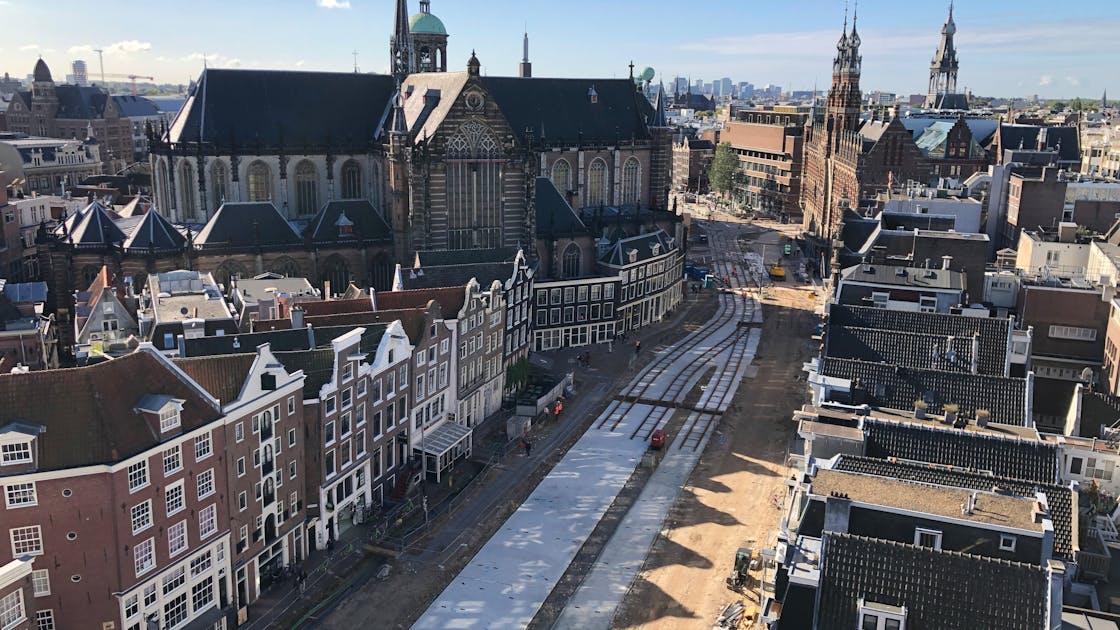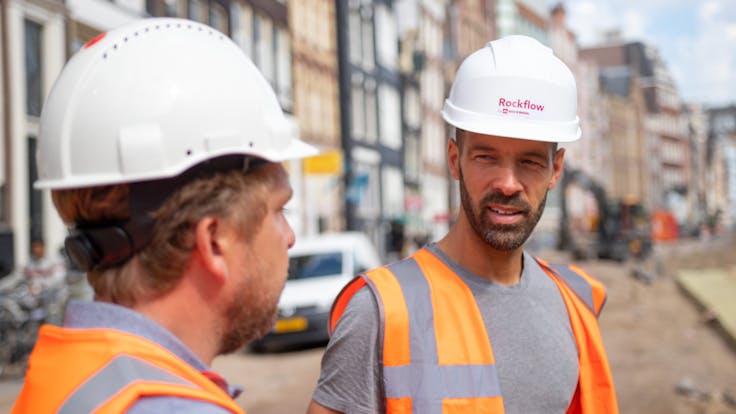Where will the infiltration facility be installed?
Timo Zijl, works planner for the municipality of Amsterdam: "The city wanted to redesign the Nieuwezijds Voorburgwal, replace the tramways and the greenery, modify all the roads, from façade to façade. Part of this plan also includes capturing rainwater during heavy downpours. Ultimately, it was clear that this would only be possible under the tramway, because that is the only space available."
But can heavy trams safely travel over a water buffer system that, by definition, consists almost entirely of a hollow space? That was the question facing the project team of the municipality of Amsterdam, Waternet and KWS. The municipality has used Rockflow infiltration systems on other projects in the past, and wanted to apply the principle here as well. "In previous projects, we chose Rockflow because of the flexibility of the system when you have to work around cables, pipes or other underground obstacles. The issue here was not cables and pipes under the tramway, but the load capacity and absorption volume. We don’t know much about water storage in general, let alone product-specific details. That's why we took advice from Rockflow when creating the design and describing it in the scope."
“The most important part is that you don't notice it’s there"
Janneke Tax, Tram Asset Manager of the GVB, the public transport operator for Amsterdam: "We were asked to agree to the construction of a water storage area under the tramway. This is a deviation from the standard requirements, whereby an enquiry is reviewed based on various criteria, such as maintenance costs, expected impact on passengers and in this case, of course, the load-bearing capacity of the system with respect to rail buckling. The rail buckling was calculated in two scenarios and in both cases little to no difference is expected compared to the normal situation. And, the most important issue for us, is that we don't notice it’s there."
Daan Los, Advisor at ROCKWOOL Rainwater Systems: "When it turned out that the only space available was under the tramway, we were asked if that was possible with our product. I contacted a colleague in a specialised business unit within the Rockwool organisation who was able to carry out the necessary calculations. We compared two scenarios. One scenario assumes the existing situation with the existing foundation under the tramway, and the other calculates what happens if you apply half a meter of rock wool as a buffer. The difference in rail buckling is minimal. On that basis, the municipality and GVB agreed to proceed with the system. Waternet then modelled the system into the overall sewer system. This then formed the basis of the calculations to verify that water can indeed flow into the system fast enough, and how the system works in terms of discharging and infiltration into the ground. Rockflow stone wool elements consist of 95% hollow space in which water is absorbed. The permeability of the stone wool is particularly high so that water can flow into it very quickly. The water can then slowly infiltrate back into the ground. When the modelling also showed this, we were able to design and work out the system in more detail, with all the connections, ducts and vents."



